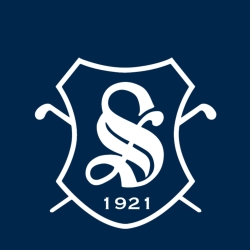Railways
Canada’s first railway, the Champlain and St. Lawrence between Laprairie and St. Johns had been running since 1836. At that time, Montreal was a city of 57,000 people. There was a great deal of steamboat activity on the rivers and lakes. With the success of the small railroad, it was decided that trains were here to stay.
By 1847, Lachine was booming due to the building of the Lachine Canal, Dawes Brewery and the Hudson’s Bay Company. The Brewery property included fields further north where barley and hops were grown. Some of this land would become Summerlea Golf Club. Now there was an urgent need to bypass the formidable Lachine Rapids. On Friday, November 19, 1847 the Montreal and Lachine Railroad was opened connecting the city to the Lachine Wharf.
At the banquet that followed the inaugural trip of this railroad, His Excellency Lord Elgin, Governor-General of the British Provinces of North America said, “I trust the time is not too far distant when this railroad will be but a link in the chain that will join two oceans.“ These two small primitive woodburners that did just that, an important beginning for a 24,000 mile railway line that spans our beautiful country.
Summerlea Golf Club opened in 1921 on the Brewery land that grew barley and hops. Few people had cars so the train contributed greatly to the success of the golf club. In the Second World War, these railways carried the Armed Forces to Halifax to be shipped overseas.
Summerlea members were well pleased with the club’s location and the easy access. On long summer nights, it was easy to hop on board for the short ride home. The only problem to golfers was when concentrating on a very important putt, the train would let off a loud whistle probably causing the putter to jump and miss the shot. The Business Ladies would get the 5 o’clock train, have a bite to eat, play nine holes and get the 9 o’clock train home. No problems of slow play there.
There were three important Labatt Opens at Summerlea : 1935, 1953, and 1955. At all these events, there was outstanding attendance no doubt due to the easy access.
For a short time after the relocation, a few people would take the train to Dorion to be picked up and later returned to the station by Claude in the Summerlea Station Wagon.
This is an interesting chapter in the history of Summerlea.
Marion Dunn
